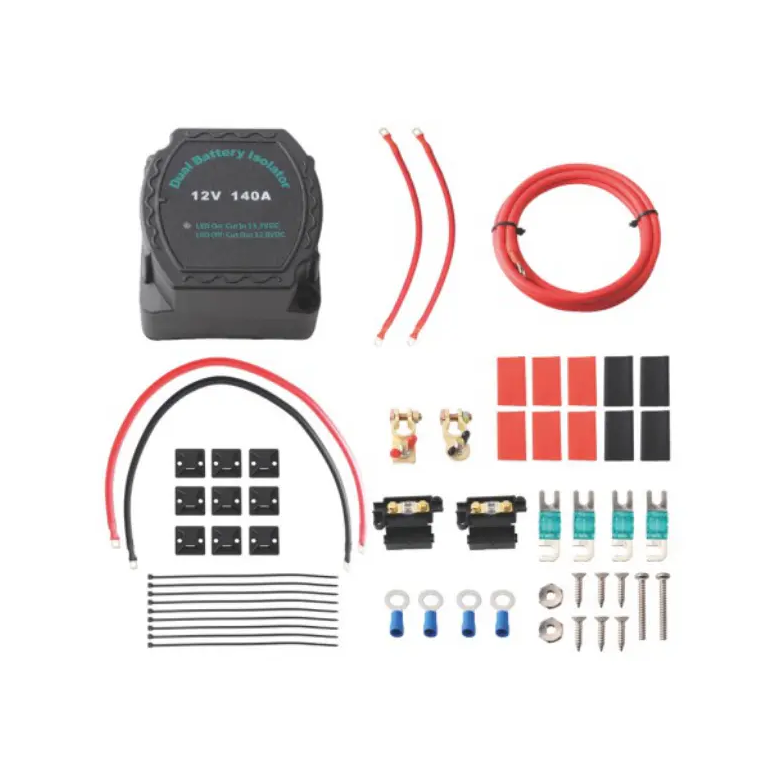In modern vehicles and off-grid power systems, managing multiple batteries is essential for both functionality and safety. A Dual Battery Isolator plays a crucial role in these setups by controlling the flow of current between the main (starting) battery and the auxiliary (house) battery. This isolation ensures that critical systems, like the vehicle's engine starting circuit, remain unaffected by accessory loads, which are often powered by the secondary battery. Understanding how a Dual Battery Isolator achieves this current separation is vital for anyone planning to build a dual-battery system for recreational vehicles, boats, off-road trucks, or mobile workstations.
At its core, a Dual Battery Isolator acts as an intelligent gatekeeper between two batteries. Its primary function is to allow charging current to flow from the alternator to both batteries when the engine is running, but to prevent current from flowing back from the auxiliary battery to the main battery when the engine is off. This function ensures that the auxiliary battery can power devices like fridges, lights, or inverters without draining the main battery, which must retain enough charge to reliably start the vehicle.
Traditional isolators used simple mechanical or diode-based systems. Diode isolators, for example, use high-current diodes to allow current to flow in only one direction—from the alternator to each battery—thereby preventing cross-discharge. However, this method introduced voltage drops and inefficiencies. More modern solutions include voltage-sensitive relays (VSR) and solid-state electronic isolators, which monitor the voltage level of the batteries in real time. A VSR automatically closes the connection between the two batteries when it senses that the main battery has reached a certain voltage (typically above 13.3 volts), indicating that it is being charged. Once this threshold is reached, the VSR connects the auxiliary battery to the system so it can also charge. When the engine is turned off and the voltage drops, the isolator disengages, preserving the charge in the starting battery.
Some advanced Dual Battery Isolator systems also include programmable logic, allowing users to set voltage thresholds, monitor battery health, and even prioritize charging depending on system needs. These intelligent isolators can protect both batteries from overcharging or deep discharge by disconnecting them if voltage readings fall outside a safe range.
In essence, what makes a Dual Battery Isolator effective is its ability to serve as an automatic switch, engaging only when charging is optimal and disconnecting when isolation is necessary. This automation eliminates the need for manual intervention and reduces the risk of human error, which could otherwise lead to a dead starting battery.
Additionally, because these isolators prevent current from flowing back and forth freely between the batteries, they help extend battery life by avoiding unnecessary cycling. They also contribute to overall system stability by ensuring that high-drain devices do not impact critical vehicle functions.
In conclusion, a Dual Battery Isolator ensures proper electrical isolation by using either diode-based one-way current control or voltage-sensitive relays that engage and disengage intelligently based on battery conditions. This functionality allows both the main and auxiliary batteries to operate efficiently, independently, and safely, making the isolator a critical component in any dual-battery power system.
12V
OEM X Retrofitted vehicles, RVS, yachts, solar charging units
